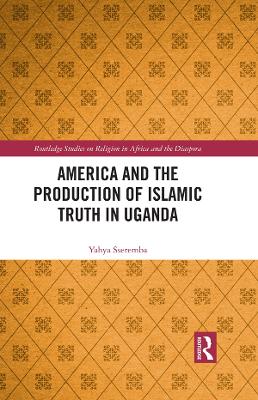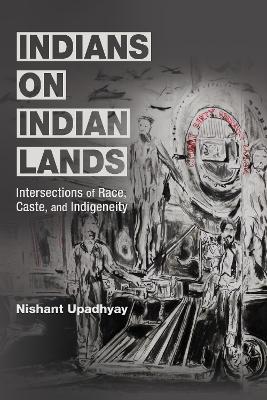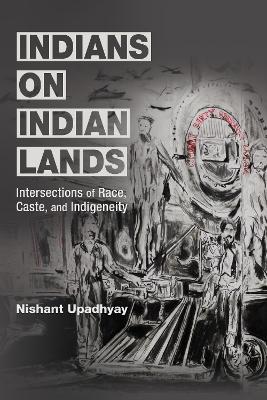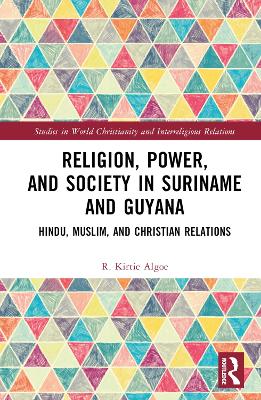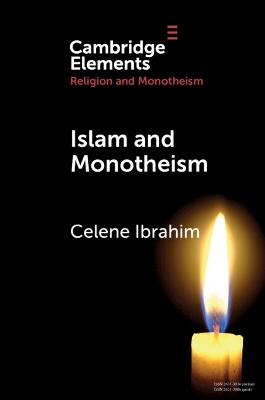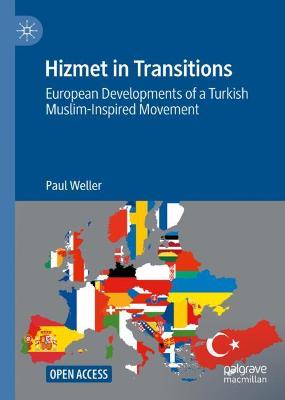Reclaiming Karbala
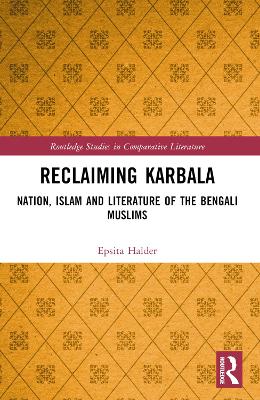 portes grátis
portes grátis
Reclaiming Karbala
Nation, Islam and Literature of the Bengali Muslims
Halder, Epsita
Taylor & Francis Ltd
10/2024
322
Mole
9781032195438
Pré-lançamento - envio 15 a 20 dias após a sua edição
Descrição não disponível.
List of Figures
Acknowledgements
A Note on Transliteration and Other Conventions
List of Abbreviations
Introduction: Situating Karbala in Bengal
Chapter 1: Mapping Karbala from orality to print
Prologue
1.1 Creative application of Islamic ideas in early modern Bengal
1.1.1 Karbala in the Bengal region
1.1.2 Translation/rewriting as intertextuality, narrative as speech act
1.2 Dobhashi: The language of the popular
1.2.1 From recitation to reading: At the threshold
1.2.2 How cheap, how scriptural: The internal ambivalence of Dobhashi
1.3 Oral forms, scripted format: Whatever happened to the performative?
1.4 Writing as sacred ritual: Turning pain from body to book
Conclusion
Chapter 2: Print and Husayn-Centric Piety
Prologue
2.1 New sober Islam and the new authors
2.1.1 Sunna and ma?hab: Two elements of reformist sensibilities
2.1.2 From pir-centric piety to Prophet-centric piety: Muhammad as the moral template
2.2 The Caliphate and the ahl ul-bayt: Two legacies of Muhammad and his intercession
2.2.3 Namaz and the ahl ul-bayt: Muhammad's twin treasures
2.3 Fatima, the mother of the martyrs: The template of Sabr
Conclusion
Chapter 3: The Rhetoric of Loss and Recovery: The Moment of Muslim jatiyata
Prologue
3.1 The beginning of jati?ata: Bengaliness and Muslimness
3.1.1 The jati?a between Syed Ameer Ali and Jamaluddin al-Afghani
3.1.2 Anjumans, periodicals and the new print network: Affiliation, alliance and antagonism
3.2 Talking back to the Evangelists and Orientalists: Jesus versus Muhammad
3.3 The Bangla-Urdu divide: Bengali Muslims between region and nation
3.4 Literariness of jati?a sahitya
Conclusion
Chapter 4: The Recovery of the Past: History and Biography
Prologue
4.1 A Hindu nationalist script and the Muslim jati?a
4.1.1 The search for jati?a: Territorial expansion and authentication
4.1.2 Writing the history of the sacred: Between Medina and Mymensingh
4.2 Jibani/Carit as a modern genre: The contributions of Girishchandra Sen
4.3 Writing jati?a Itihas and jibani as modern literature: Between the rational and the miraculous
4.4 Other histories and other biographies: Between the pan-Islamic and the province
4.5 Ummah, succession and the Karbala in jati?a sahitya
Conclusion
Chapter 5: Literature, Modernity, Multilinguality
Prologue
5.1 Misra Bangla: Linguistic identity-in-difference
5.1.1 Reformist Islam and the claims over Bangla language: Ahle Hadis, Islam Darsan, Ba?gi?a Mussalman Sahitya Patrika
5.1.2 Bangla as misra bhasha in Muslim multilingualism
5.1.3 Redefining literary modernity: Recovery of puthis, discovery of folk
5.2 Karbala: Intra-literary reception and rejection
5.2.1 Narrative as argumentative discourse: Moharram Kanda
5.2.2 From Mahasmasan Kabya to Maharam Sariph ba Atma-bisarjan Kabya: Kaykobad and Karbala
5.3 Poetry as Kaiphi?at: Karbala Kabya and Maharam Sariph
Conclusion
Afterword: 300 Karbalas and Beyond
Bibliography
Index
Acknowledgements
A Note on Transliteration and Other Conventions
List of Abbreviations
Introduction: Situating Karbala in Bengal
Chapter 1: Mapping Karbala from orality to print
Prologue
1.1 Creative application of Islamic ideas in early modern Bengal
1.1.1 Karbala in the Bengal region
1.1.2 Translation/rewriting as intertextuality, narrative as speech act
1.2 Dobhashi: The language of the popular
1.2.1 From recitation to reading: At the threshold
1.2.2 How cheap, how scriptural: The internal ambivalence of Dobhashi
1.3 Oral forms, scripted format: Whatever happened to the performative?
1.4 Writing as sacred ritual: Turning pain from body to book
Conclusion
Chapter 2: Print and Husayn-Centric Piety
Prologue
2.1 New sober Islam and the new authors
2.1.1 Sunna and ma?hab: Two elements of reformist sensibilities
2.1.2 From pir-centric piety to Prophet-centric piety: Muhammad as the moral template
2.2 The Caliphate and the ahl ul-bayt: Two legacies of Muhammad and his intercession
2.2.3 Namaz and the ahl ul-bayt: Muhammad's twin treasures
2.3 Fatima, the mother of the martyrs: The template of Sabr
Conclusion
Chapter 3: The Rhetoric of Loss and Recovery: The Moment of Muslim jatiyata
Prologue
3.1 The beginning of jati?ata: Bengaliness and Muslimness
3.1.1 The jati?a between Syed Ameer Ali and Jamaluddin al-Afghani
3.1.2 Anjumans, periodicals and the new print network: Affiliation, alliance and antagonism
3.2 Talking back to the Evangelists and Orientalists: Jesus versus Muhammad
3.3 The Bangla-Urdu divide: Bengali Muslims between region and nation
3.4 Literariness of jati?a sahitya
Conclusion
Chapter 4: The Recovery of the Past: History and Biography
Prologue
4.1 A Hindu nationalist script and the Muslim jati?a
4.1.1 The search for jati?a: Territorial expansion and authentication
4.1.2 Writing the history of the sacred: Between Medina and Mymensingh
4.2 Jibani/Carit as a modern genre: The contributions of Girishchandra Sen
4.3 Writing jati?a Itihas and jibani as modern literature: Between the rational and the miraculous
4.4 Other histories and other biographies: Between the pan-Islamic and the province
4.5 Ummah, succession and the Karbala in jati?a sahitya
Conclusion
Chapter 5: Literature, Modernity, Multilinguality
Prologue
5.1 Misra Bangla: Linguistic identity-in-difference
5.1.1 Reformist Islam and the claims over Bangla language: Ahle Hadis, Islam Darsan, Ba?gi?a Mussalman Sahitya Patrika
5.1.2 Bangla as misra bhasha in Muslim multilingualism
5.1.3 Redefining literary modernity: Recovery of puthis, discovery of folk
5.2 Karbala: Intra-literary reception and rejection
5.2.1 Narrative as argumentative discourse: Moharram Kanda
5.2.2 From Mahasmasan Kabya to Maharam Sariph ba Atma-bisarjan Kabya: Kaykobad and Karbala
5.3 Poetry as Kaiphi?at: Karbala Kabya and Maharam Sariph
Conclusion
Afterword: 300 Karbalas and Beyond
Bibliography
Index
Este título pertence ao(s) assunto(s) indicados(s). Para ver outros títulos clique no assunto desejado.
Bengali Muslims;Ahl Al Bayt;Sanskritised Bangla;National Library;Husayn's Martyrdom;Reformist Ulama;Territorial Nationalism;Muslim Literati;Early Caliphate;Sunni Reformist;Bangla Literature;Bengali Muslim Identity;Abdul Bari;Bengali Public Sphere;Standardised Bangla;Bengali Muslim Community;Khilafat Movement;East Pakistan;Bangla Language;Zayn Al Abidin;Bangla Academy;Fazlul Huq;Jurji Zaydan;Abdul Kadir;Muhammad's Life
List of Figures
Acknowledgements
A Note on Transliteration and Other Conventions
List of Abbreviations
Introduction: Situating Karbala in Bengal
Chapter 1: Mapping Karbala from orality to print
Prologue
1.1 Creative application of Islamic ideas in early modern Bengal
1.1.1 Karbala in the Bengal region
1.1.2 Translation/rewriting as intertextuality, narrative as speech act
1.2 Dobhashi: The language of the popular
1.2.1 From recitation to reading: At the threshold
1.2.2 How cheap, how scriptural: The internal ambivalence of Dobhashi
1.3 Oral forms, scripted format: Whatever happened to the performative?
1.4 Writing as sacred ritual: Turning pain from body to book
Conclusion
Chapter 2: Print and Husayn-Centric Piety
Prologue
2.1 New sober Islam and the new authors
2.1.1 Sunna and ma?hab: Two elements of reformist sensibilities
2.1.2 From pir-centric piety to Prophet-centric piety: Muhammad as the moral template
2.2 The Caliphate and the ahl ul-bayt: Two legacies of Muhammad and his intercession
2.2.3 Namaz and the ahl ul-bayt: Muhammad's twin treasures
2.3 Fatima, the mother of the martyrs: The template of Sabr
Conclusion
Chapter 3: The Rhetoric of Loss and Recovery: The Moment of Muslim jatiyata
Prologue
3.1 The beginning of jati?ata: Bengaliness and Muslimness
3.1.1 The jati?a between Syed Ameer Ali and Jamaluddin al-Afghani
3.1.2 Anjumans, periodicals and the new print network: Affiliation, alliance and antagonism
3.2 Talking back to the Evangelists and Orientalists: Jesus versus Muhammad
3.3 The Bangla-Urdu divide: Bengali Muslims between region and nation
3.4 Literariness of jati?a sahitya
Conclusion
Chapter 4: The Recovery of the Past: History and Biography
Prologue
4.1 A Hindu nationalist script and the Muslim jati?a
4.1.1 The search for jati?a: Territorial expansion and authentication
4.1.2 Writing the history of the sacred: Between Medina and Mymensingh
4.2 Jibani/Carit as a modern genre: The contributions of Girishchandra Sen
4.3 Writing jati?a Itihas and jibani as modern literature: Between the rational and the miraculous
4.4 Other histories and other biographies: Between the pan-Islamic and the province
4.5 Ummah, succession and the Karbala in jati?a sahitya
Conclusion
Chapter 5: Literature, Modernity, Multilinguality
Prologue
5.1 Misra Bangla: Linguistic identity-in-difference
5.1.1 Reformist Islam and the claims over Bangla language: Ahle Hadis, Islam Darsan, Ba?gi?a Mussalman Sahitya Patrika
5.1.2 Bangla as misra bhasha in Muslim multilingualism
5.1.3 Redefining literary modernity: Recovery of puthis, discovery of folk
5.2 Karbala: Intra-literary reception and rejection
5.2.1 Narrative as argumentative discourse: Moharram Kanda
5.2.2 From Mahasmasan Kabya to Maharam Sariph ba Atma-bisarjan Kabya: Kaykobad and Karbala
5.3 Poetry as Kaiphi?at: Karbala Kabya and Maharam Sariph
Conclusion
Afterword: 300 Karbalas and Beyond
Bibliography
Index
Acknowledgements
A Note on Transliteration and Other Conventions
List of Abbreviations
Introduction: Situating Karbala in Bengal
Chapter 1: Mapping Karbala from orality to print
Prologue
1.1 Creative application of Islamic ideas in early modern Bengal
1.1.1 Karbala in the Bengal region
1.1.2 Translation/rewriting as intertextuality, narrative as speech act
1.2 Dobhashi: The language of the popular
1.2.1 From recitation to reading: At the threshold
1.2.2 How cheap, how scriptural: The internal ambivalence of Dobhashi
1.3 Oral forms, scripted format: Whatever happened to the performative?
1.4 Writing as sacred ritual: Turning pain from body to book
Conclusion
Chapter 2: Print and Husayn-Centric Piety
Prologue
2.1 New sober Islam and the new authors
2.1.1 Sunna and ma?hab: Two elements of reformist sensibilities
2.1.2 From pir-centric piety to Prophet-centric piety: Muhammad as the moral template
2.2 The Caliphate and the ahl ul-bayt: Two legacies of Muhammad and his intercession
2.2.3 Namaz and the ahl ul-bayt: Muhammad's twin treasures
2.3 Fatima, the mother of the martyrs: The template of Sabr
Conclusion
Chapter 3: The Rhetoric of Loss and Recovery: The Moment of Muslim jatiyata
Prologue
3.1 The beginning of jati?ata: Bengaliness and Muslimness
3.1.1 The jati?a between Syed Ameer Ali and Jamaluddin al-Afghani
3.1.2 Anjumans, periodicals and the new print network: Affiliation, alliance and antagonism
3.2 Talking back to the Evangelists and Orientalists: Jesus versus Muhammad
3.3 The Bangla-Urdu divide: Bengali Muslims between region and nation
3.4 Literariness of jati?a sahitya
Conclusion
Chapter 4: The Recovery of the Past: History and Biography
Prologue
4.1 A Hindu nationalist script and the Muslim jati?a
4.1.1 The search for jati?a: Territorial expansion and authentication
4.1.2 Writing the history of the sacred: Between Medina and Mymensingh
4.2 Jibani/Carit as a modern genre: The contributions of Girishchandra Sen
4.3 Writing jati?a Itihas and jibani as modern literature: Between the rational and the miraculous
4.4 Other histories and other biographies: Between the pan-Islamic and the province
4.5 Ummah, succession and the Karbala in jati?a sahitya
Conclusion
Chapter 5: Literature, Modernity, Multilinguality
Prologue
5.1 Misra Bangla: Linguistic identity-in-difference
5.1.1 Reformist Islam and the claims over Bangla language: Ahle Hadis, Islam Darsan, Ba?gi?a Mussalman Sahitya Patrika
5.1.2 Bangla as misra bhasha in Muslim multilingualism
5.1.3 Redefining literary modernity: Recovery of puthis, discovery of folk
5.2 Karbala: Intra-literary reception and rejection
5.2.1 Narrative as argumentative discourse: Moharram Kanda
5.2.2 From Mahasmasan Kabya to Maharam Sariph ba Atma-bisarjan Kabya: Kaykobad and Karbala
5.3 Poetry as Kaiphi?at: Karbala Kabya and Maharam Sariph
Conclusion
Afterword: 300 Karbalas and Beyond
Bibliography
Index
Este título pertence ao(s) assunto(s) indicados(s). Para ver outros títulos clique no assunto desejado.
Bengali Muslims;Ahl Al Bayt;Sanskritised Bangla;National Library;Husayn's Martyrdom;Reformist Ulama;Territorial Nationalism;Muslim Literati;Early Caliphate;Sunni Reformist;Bangla Literature;Bengali Muslim Identity;Abdul Bari;Bengali Public Sphere;Standardised Bangla;Bengali Muslim Community;Khilafat Movement;East Pakistan;Bangla Language;Zayn Al Abidin;Bangla Academy;Fazlul Huq;Jurji Zaydan;Abdul Kadir;Muhammad's Life

